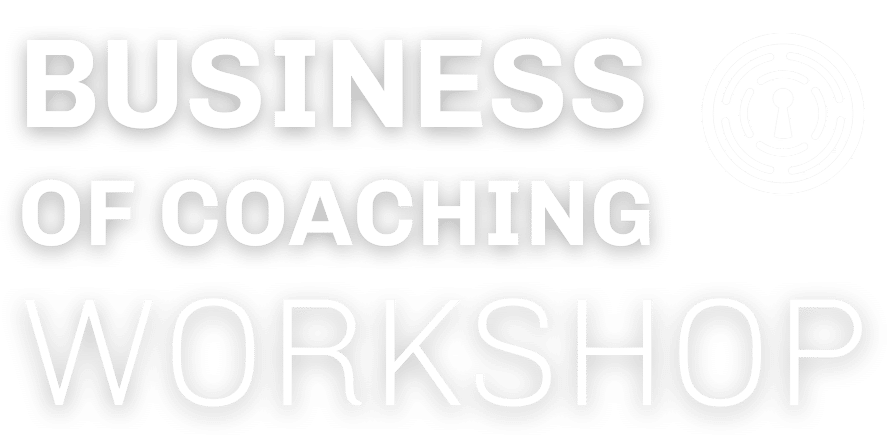Mastering Sustainable Coaching Pricing: Strategies for Long-Term Business Growth
Coaches, learn how to set sustainable pricing by understanding your ideal clients, calculating key financial metrics, raising prices thoughtfully, and balancing personalized coaching with lower-cost services.
Setting the right price for your coaching services is one of the most critical aspects of running a successful business. Pricing is not just about picking a number. It is about balancing the value you provide with your financial needs and market expectations. We will explore key strategies for pricing your services and how to ensure your pricing structure supports long-term growth.
Step One to Setting Sustainable Pricing: Understand Your Ideal Client
Before setting prices, you must first understand who your ideal client is and what they value. Here are a few important considerations:
- Who is your ideal client? Think about their challenges, goals, and how your services fit into their lives.
- What is your market? Pricing can vary depending on location and demographics. Urban markets may support higher prices than rural ones, so consider these factors when determining your rates.
- What sets you apart? Identify the unique skills, experiences, and services that differentiate you from other coaches.
- What is your value metric? This could be client progress, workouts completed, or positive feedback that reflects the tangible results your clients achieve.
- What features do you offer? Decide what services you want to include at different price points—personalized coaching, video feedback, nutrition guidance, etc.
Having a clear understanding of these factors helps you align your pricing with your target audience’s expectations and your business objectives.
Calculating Lifetime Value to Customer Acquisition Cost Ratio
Once you understand your ideal client and value proposition, it is time to consider the financials. A critical metric to track is the lifetime value (LTV) to customer acquisition cost (CAC) ratio. This helps you understand whether your pricing structure is sustainable. LTV represents the total revenue generated from a client throughout your relationship, while CAC is the cost of acquiring that client.
For a healthy business model, your CAC should be about 10% of your LTV. For example, if your LTV is $5,000, your CAC should not exceed $500. This balance ensures you are investing efficiently in customer acquisition while maintaining profitability.
Raising Your Prices with Thoughtfulness
As your coaching business grows, raising your prices may become necessary to maintain quality service and financial sustainability. Here’s how to approach price increases carefully:
Assess the Impact: Before raising your prices, consider how the change will impact your current client base. Make sure the new rates align with the value you provide.
Communicate Transparently: Clients should understand why your prices are going up. Clearly explain how their experience will improve due to your investments in tools, certifications, or enhanced services.
Reward Loyalty: To ease the transition, consider honoring the current price for loyal clients or offering them the option to lock in their rate for a longer period. This can soften the impact of the price increase and help maintain goodwill.
Provide an “Out”: Offer clients an opportunity to discuss the price increase with you personally. This gesture shows empathy and allows for open communication, which can help preserve relationships even if clients decide not to continue.
Balancing Low-Touch Services and Personalized Coaching
When pricing your services, it is important to differentiate between high-effort, personalized coaching and lower-touch services like templates or group programs.
Low-cost services such as templates can be appealing but make sure that the time and cost to deliver these services does not outweigh the price you are charging. If you are offering a template-based service, the acquisition and delivery process must be efficient.
On the other hand, personalized coaching, especially in areas like nutrition, is time-intensive and requires expertise. Offering nutrition coaching at a low price can be problematic unless you have a scalable system in place. If you choose to upsell nutrition coaching, do so in a way that adds value without overloading your schedule.
The key is to provide high-value services that justify the cost, particularly for more personalized offerings that demand significant time and expertise.
Sustainable Pricing for the Long-Term
Pricing is not just about charging what you are worth—it is about making sure your business remains financially viable and competitive. By understanding your LTV to CAC ratio, you can determine whether your pricing supports the long-term growth of your business. This means balancing the value you offer with the price you charge, ensuring that both are aligned with the market and your financial goals.
This material was recently covered in the Business of Coaching Workshop, a series designed to help coaches grow their businesses by mastering key principles like trust, pricing, and delivering value. Each session dives into actionable strategies to build better client relationships and drive success. Want to take your coaching practice to the next level? Join us for the next workshop—it’s free.



